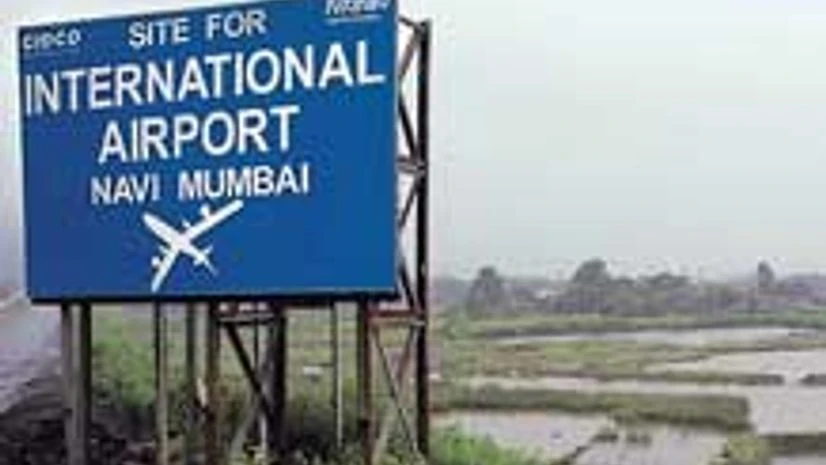An agreement between land owners and the Maharashtra government paves the way for construction of the new airport to begin at Navi Mumbai. While this is definitely an important milestone that the government was keen to achieve ahead of the parliamentary elections, several other significant hurdles need to be crossed before this project - first conceived way back in 1998, actually becomes a reality.
Those in the know of things expect the RFQ (Request For Quotation) for the project to be issued by the end of the year and the bid process to start simultaneously, but the actual award is unlikely to happen before the end of 2014. That means the airport, if all goes well, will be operational not before 2020.
Environmental Concerns
“Even though the land acquisition process is now complete and that’s definitely a big milestone crossed, we expect certain environmental problems to crop up going ahead” Kapil Kaul - CEO South Asia, CAPA the aviation consultancy told Business Standard. In fact Debi Goenka, an environmental activist and managing trustee of the Conservation Act Trust, was quoted by the Mint Newspaper just yesterday as saying that CIDCO, the nodal agency for the project, has a long way to go before it can start constructing the airport. Goenka said his teams were working towards challenging the decision to give the environmental clearance for the project which was secured 3 years ago.
Also Read
The site of the airport is a difficult one and developers will have to undertake significant changes including altering courses of rivers to avoid flooding, reclamation of land, leveling of hillocks, hacking hundreds of acres of mangroves & forests. To top this, the airport is within close vicinity of the Karnala bird sanctuary and aviation experts like Hormuz Mama have raised concerns regarding the impact of aircraft operations on birds as well as on flight safety due to potential instances of bird ingestion into engines.
Commercial Viability
Industry experts are also concerned about the commercial viability of the project given that the project cost has shot up exponentially. At the current estimates – pegged at $2.5 billion (which is more than twice the initial estimate), the project is, simply put, unviable say sources. Representations are likely to be made at the meeting called by the Prime Minister today to push for assured 16-18% ROE (return on equity) for developers. That is possible “only if the government agrees to contracts that allow for liberal use of land for development, short term support and zero interest loans from CIDCO, an extended lease period for 40 to 60 years, among other things” says an official who is part of the negotiations.
Evincing private interest in the project will rest on the final structure of the development model says Kaul. “What the government says about the cost of land acquisition, R&R and dredging & leveling of the land is critical. Will this be loaded into the project cost or will it be met through budget costs? We need more clarity on those issues and the government must ensure that in order to generate adequate participation, the project is made viable.”
A recent report in this newspaper suggests CIDCO will push a ‘hybrid-till model’ to calculate aeronautical rates for the proposed airport which takes into consideration a portion of non-aeronautical revenue (commercial revenue) at the airport while fixing the landing and parking charges, user fees and other aeronautical charges as opposed to the single-till model, which uses the entire non-aeronautical revenue to offset aeronautical charges. Developers prefer this model.
CIDCO will also reportedly finance the pre-development cost of Rs 1,900 crore, comprising Rs 1,400 crore towards land fill and Rs 5,00 crore for the shifting of transmission lines. This cost will be loaded on the joint venture company as the interest-free loan.
There is still a remote possibility that the airport could be shifted to an alternative site according to other press reports. "If high project cost makes it financially unviable for bidders, we may have to shift the site and build it by reclaiming the sea," chief minister Prithviraj Chavan told the Times of India on Monday.
Easy Connectivity the Key
Connectivity to the island city is another major concern given the distance between the site at Panvel and the island city. Writing in the Economic Times, independent aviation analyst Hormuz Mama says “much of the important transit traffic at Mumbai airport is domestic. So, international passengers arriving at Mumbai will travel to Panvel to catch their connecting flights, increasing transit time. Ideally, passengers should catch their connecting flights in the same terminal. Also, Cidco has no experience of airport development — or of any other work of such complexity.”
Kaul meanwhile, is apprehensive about whether seamless connectivity to the airport can be achieved within 4-5 years “given the poor track record of the Maharashtra government in finishing big infrastructure projects particularly in and around Mumbai”. The 22 kms Mumbai Trans Harbour Link will be crucial to connect the island city with Navi Mumbai, but the project got no bidders when it was tendered out the past 3 times. The Maharashtra government is now planning to actively pursue the development of the Rs 9,360 crore project on an engineering, procurement and construction basis, and the project is likely to figure in the discussions with the Prime Minister today.
What about the interim?
It will be critical for the government to iron out all these issues before we can pop the bubbly on the Navi Mumbai airport. Any further delay will have severe repercussions given that the existing Mumbai airport is likely to hit saturation point by 2015. Pune is already saturated so, without new capacity the entire western region will be constrained, especially given the surge in air traffic that’s expected in the years ahead.
It’s a different debate of course, on what happens in the interim; between 2015 when Mumbai is saturated and 2020 when the Navi Mumbai airport is pegged to come up.

)
